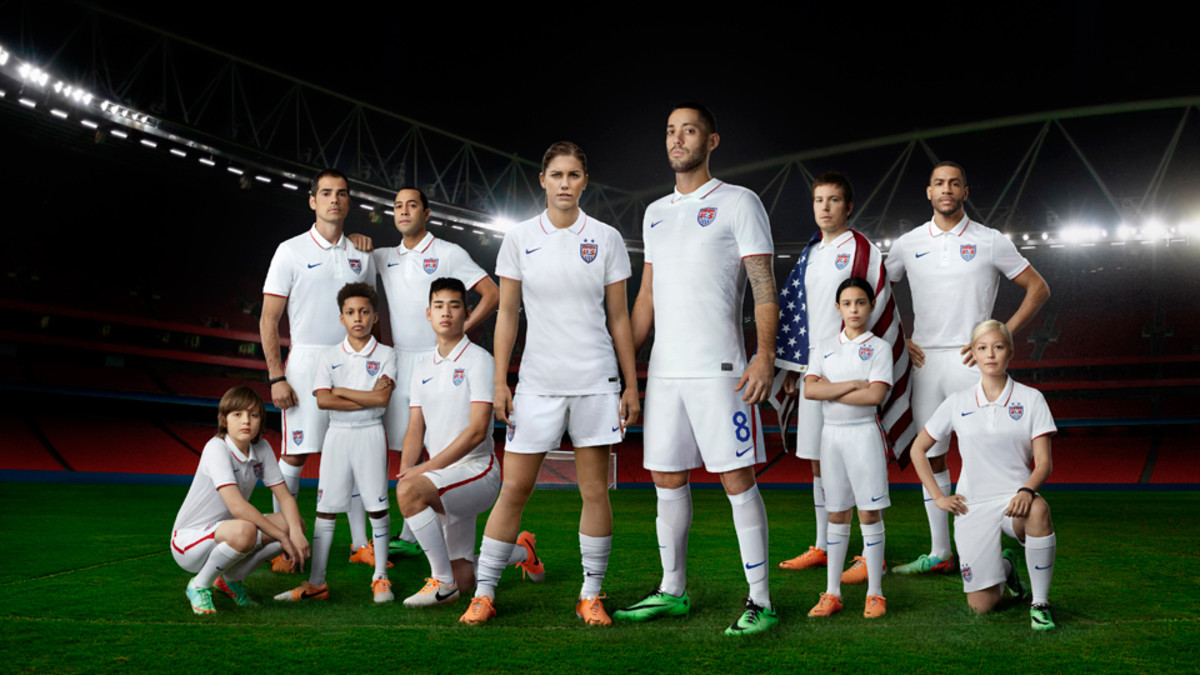Incorporating Technology into the Design of World Cup Uniforms
Looking snazzy is one thing, but having the ability to play at the highest level on the biggest stage in the world, while also looking good? Well, that’s just awesome.
This year’s World Cup in Brazil offers a chance for the 32 teams competing to make a run at one of the world’s most prized trophies, and they get to choose what they wear along the way.
While each country incorporates a piece of culture in the design of their jerseys, the three leading apparel makers that account for 27 of the 32 teams have added in a little piece of themselves. Companies such as Nike, adidas and Puma are showing off their latest apparel technology in what they feel gives players a competitive edge for 90 minutes of intense sport in what has proven to be equally intense weather.
Nike, which landed 10 of the 32 nations for the World Cup, including the U.S., Portugal, England and the host team, Brazil, has created a fabric combination focused on cooling. Nike’s Dri-Fit technology pulls moisture away from the skin to the outside of the uniform using a dual-knit fabrication that incorporates cotton and recycled polyester, while keeping the shirt’s streamlined shape. But that isn’t all. Adding in laser-cut ventilation holes and mesh in areas where the body generates heat allows for increased breathability and even airflow across the skin.
Super Sod: Designed to Outperform the Elements, World Cup Athletes
“By managing sweat and keeping the body cooler longer, players feel more comfortable, sweat less and perform better,” says Martin Lotti, Nike’s creative director for soccer.
Fabric made from recycled plastic bottles plays prominently in Nike kits, with each combination of shirt, shorts and socks made from an average of 18 recycled bottles.
To cut down on unnecessary fabric that gets in the way, Nike’s Oregon-based designers used 3D body scans of top-level players to give them a baseline of what an elite-level soccer player’s body looks like. From there, they could give the kit an updated fit—including in the socks, which were updated in 2014 with cushioned zones and flex grooves to keep it from bunching—that allows a player to move more naturally.
Underneath the team’s jersey, Nike has a line of baselayer products designed for Brazil’s midday heat and cooler evenings that range from high breathability to much warmer. New for 2014, the Pro Combat Ultralight Slider Shorts, 20 percent lighter than the company’s previous offerings, uses mesh to cut down on weight but then adds protection where athletes slide most.
At adidas, lighter has proven better for the German company. With nine teams in the adidas stable for the World Cup, including Mexico, Spain, Germany and Argentina, each national kit will weigh just 8.8 ounces, including the shirt, shorts and socks, a 40 percent reduction from what national teams were wearing before, says Ernesto Bruce, adidas’ head of soccer for North America.
Using new ultra-light polyester—dubbed adizero—that has proven thin and highly flexible, athletes can have a uniform that “provides a lighter load for the player.” The shirt itself weighs just 3.5 ounces, along with adidas’ signature Climacool moisture wicking technology for increased ventilation.
Off-field Athlete Gear Goes High-tech for the World Cup in Brazil
Compression and breathable stretch materials extend in strategic locations to provide muscles with necessary support, Bruce says.
Puma, which will outfit eight federations for the World Cup, including Italy, has created ACTV technology that combines athletic taping and compression into a jersey for the first time. This technology will be used across all its World Cup uniforms.
The jersey is 89 percent polyester and 11 percent Lycra with contrast ACTV tape strategically placed on the inside of the uniform to “micro-massage” specific areas of the skin. The compression element aims to reduce muscle vibration during a game.
“By fusing athletic taping and compression, what we create is a system that enables faster energy supply to the muscles through the stimulation of the skin,” says Jordi Beneyto Ferre, Puma innovation designer.
The jerseys also include moisture-wicking material and four-way stretch mesh panels at the sides, on the back and under the arms.
Snazzy.
Tim Newcomb covers stadiums, design and gear for Sports Illustrated. Follow him on Twitter at @tdnewcomb.





